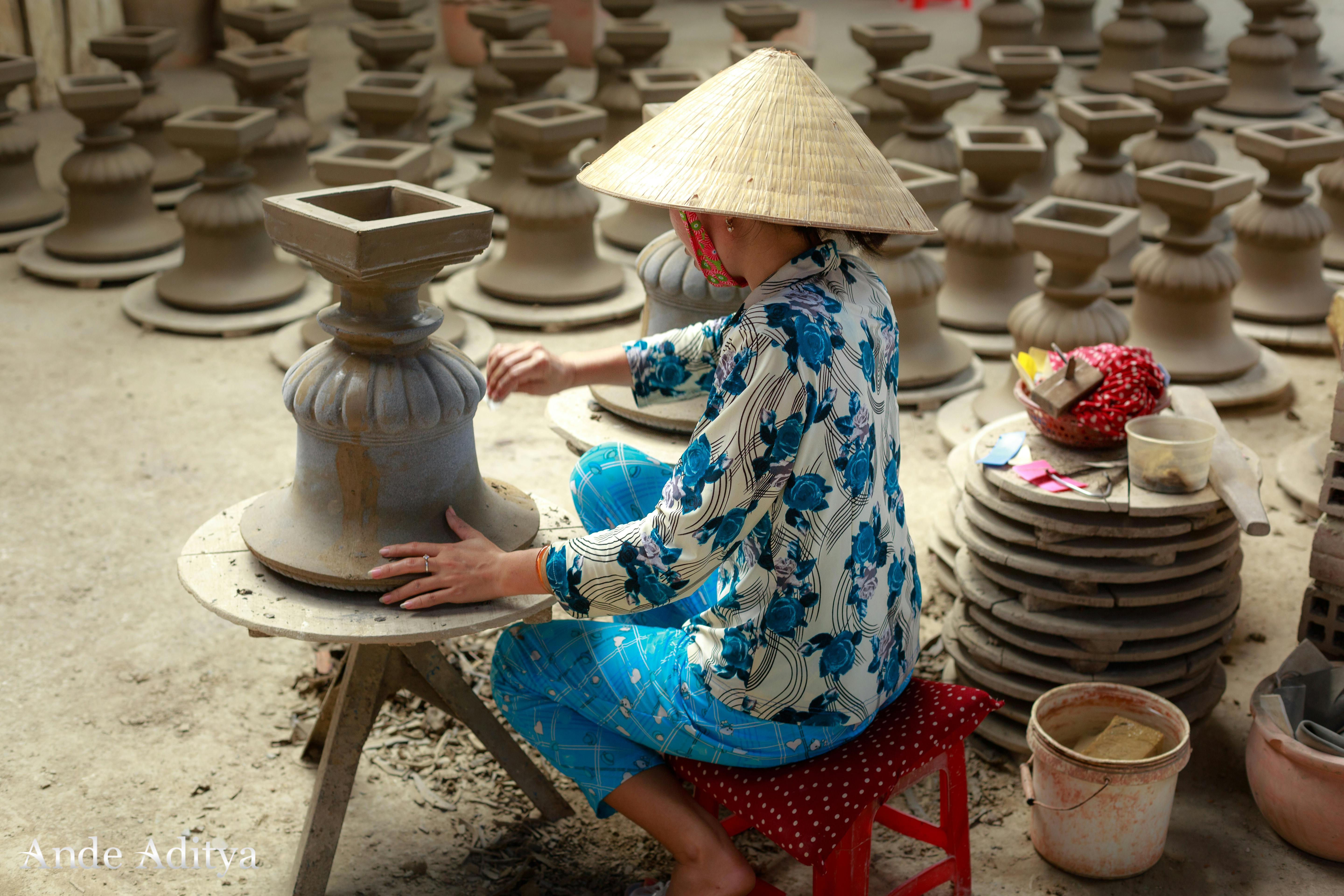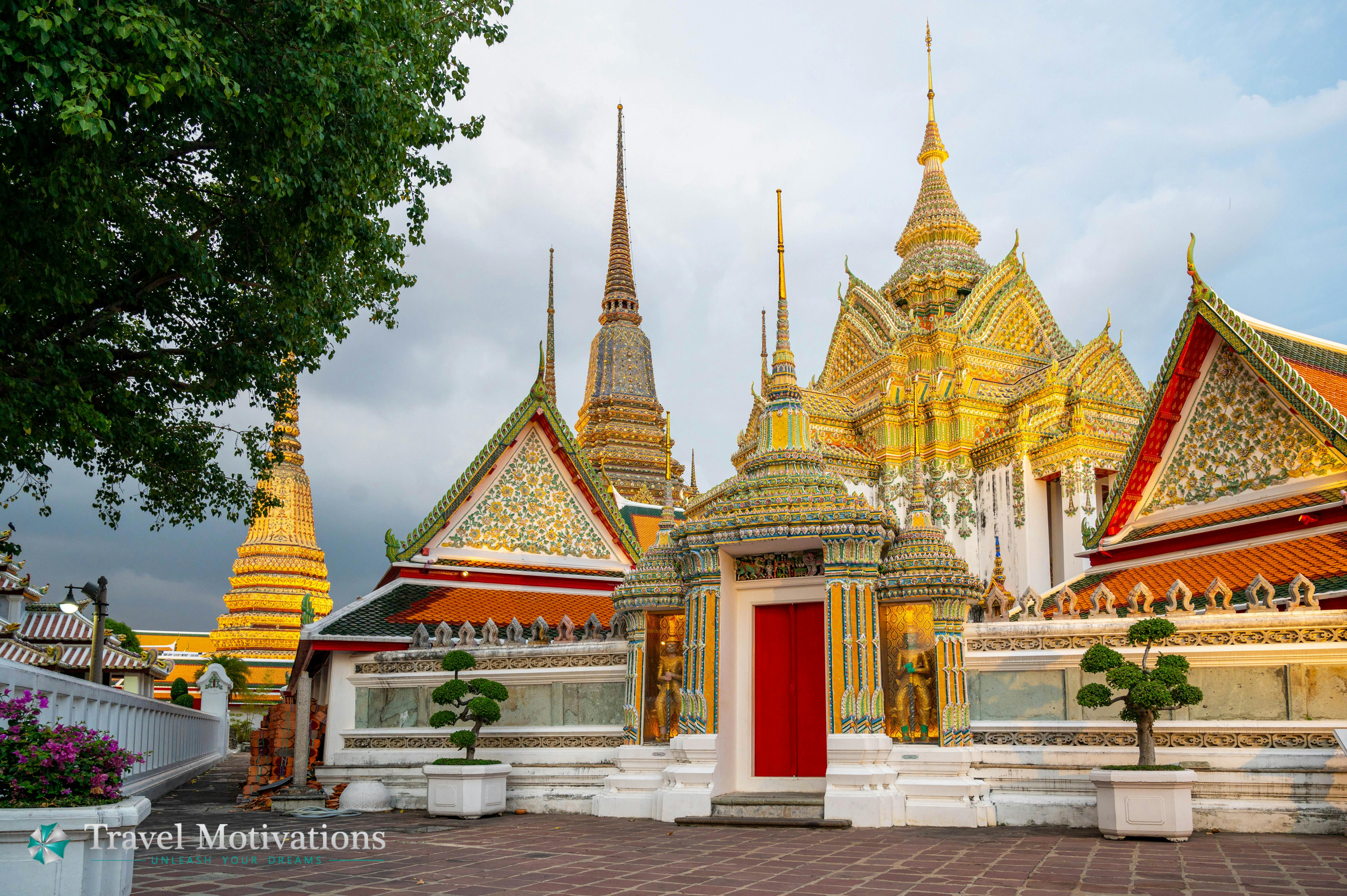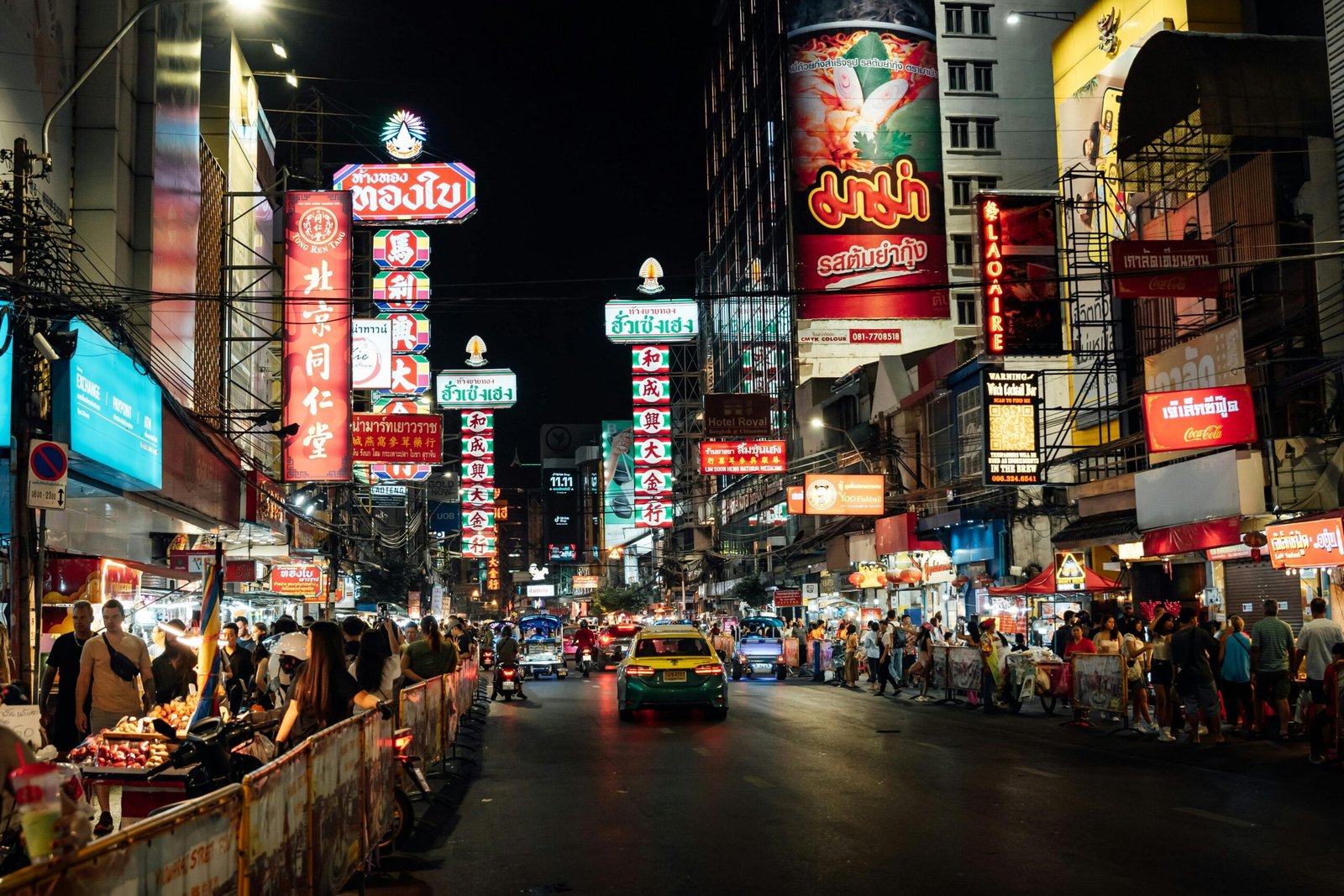Thailand is a land of a beautiful amalgamation of centuries-old traditions and innovative modern influences. Each piece is a testament to the skinful craftsmanship and intricate detailing deeply ingrained in Thai culture. Exploring the traditional arts and crafts of Thailand unveils a rich tapestry of culture, history, and craftsmanship. Behind the scenes of these cultural marvels lie centuries-old traditions, passed down through generations, each telling a unique story of Thai heritage. it provides a tangible connection to the country’s rich history and heritage. It contributes to sustaining these ancient practices, thus giving them new life in the contemporary era.
History
Thai arts and crafts are enriched with the history of the Dvaravati and Srivijaya civilisations between the 6th and 13th centuries. These art forms were a result of a cultural melting pot incorporating indigenous traditions and influences from India, China, and Southeast Asia. Over centuries, these artistic expressions have been intricately woven into the social and cultural fabric of the Thai people, playing a pivotal role in conveying their values, beliefs, and narratives.
Popular Traditional Crafts: Discussed below is a glimpse of some of Thailand’s traditional arts and crafts:
Thai Silk Weaving: In Thailand, the rural silk weaving villages produce their raw silk and make their own silk threads and yarns. Silk weaving is an intricate craft that dates back over 2,000 years in Thailand. Skilled artisans use traditional handlooms to weave intricate patterns and motifs into the fabric, often incorporating elements from nature and Thai folklore. Thai silk is renowned worldwide for its exquisite quality and vibrant colours.
One can find Thai silk throughout Bangkok, but one must be careful of the quality. Some trustworthy stores include the Jim Thompson House Museum, the Jim Thompson Factory Outlet, and Queen Thai Silk. One can also purchase Thai silk in the MBK Center and other shopping malls throughout Bangkok. Chatuchak Weekend Market is home to cheap Thai silk, for people who are not much bothered whether or not the material is synthetic. For people travelling through the north of Thailand, they can find many family-owned farms still weaving and growing their own silk, as well.
Thai Ceramics: Thailand has a long history of ceramic production, with techniques dating back to the Sukhothai and Ayutthaya periods. Thai ceramics are known for their intricate designs, often featuring delicate patterns and vibrant colours. Artisans create pottery, porcelain, and stoneware using traditional hand-throwing, moulding, and glazing methods.
Thai Wood Carving: Wood carving is a traditional Thai art form seen in temples, palaces, and traditional Thai houses throughout the country. Skilled artisans carve intricate designs into teak, rosewood, and other hardwoods, often depicting scenes from Buddhist mythology, nature, and everyday life.
Every artwork takes many months or even years to complete. Wood carving in Thailand can be divided into 3 types as follows:
- Bas-relief (Phab Na Chan) is the picture that can be seen from the front side only since there are very few curves.
- Deep relief is a picture with three dimensions (depth, width, and height). Some pictures almost come off from the background by looking from the front side. \
- Round relief occurs in sculptures such as the Buddha sculpture that can be seen from every side.
Visitors who want to purchase reasonably priced wooden, handicrafts, furniture or wall hangings, may have to travel to Chiang Mai. Wood carving is a speciality in towns such as Mae Tha and Ban Luk near Lampang as well as in the Bo Hang district of Chiang Mai, both in north Thailand. For people having limited time, they can try the Royal Thai Handicraft Centre in Bangkok. But the prices would vary, as expected. The Royal Thai Handicraft Centre has an impressive display of traditional Thai teak wood carvings. The centre is said to be the largest of its kind in the city. It is also a great place to watch Thai artisans at work.
Everything from carved wooden bowls, pillboxes, friezes, screens, headboards, doors, lintels, cabinets, beds, couches and a whole host of handicrafts such as the elephants can be purchased at markets, shopping arcades and factories in most towns and cities throughout Thailand. Traditional motifs such as the lotus flower, mythological creatures from India and serpents and dragons from China are also on offer as are wooden amulets in many forms.
Thai Silverware: Thai silverware is highly prized for its intricate designs and fine craftsmanship. Artisans handcraft silver jewellery, utensils, and decorative items using traditional techniques such as filigree, repoussé, and granulation. Each piece is a testament to the skill and artistry of the craftsmen.
Thai Puppetry (Hun Lakhon Lek): Thai puppetry, known as (Hun Lakhon Lek, is an ancient art form similar to Japanese buruku puppetry. It is a traditional form of storytelling that dates back to the Ayutthaya period.
Puppeteers use intricately carved wooden puppets to enact scenes from Thai mythology, history, and literature. The puppets are manipulated using strings and rods, and performances often feature elaborate costumes, music, and dance. Each puppet, usually just under a meter long (3.2 feet), is controlled by three people with a rope and pulley system, which help make the puppet look as if it is gracefully dancing on stage. The shows are usually accompanied by both music and a narrator who normally tells a story derived from the Ramakien, the Thai version of the Hindu Ramayana.
The puppeteers are masters at making these objects come alive during a performance, and anyone who views a show will soon forget there is someone behind the colourful and lively puppet as it seemingly takes on a life of its own.
Thai puppetry performances are put on for festivals, fairs, and other special events, as well as a handful of theatres across Thailand.
Thai Lacquerware: Thai lacquerware is crafted using a traditional technique known as lai rot nam, which involves applying layers of lacquer mixed with natural pigments onto wooden objects. Artisans then intricately carve designs into the lacquer, creating stunning decorative items such as bowls, trays, and boxes. Lacquering has long played a significant role in Thai art and craft. This protective and decorative technique has enhanced the appeal of many objects in Thailand, from exquisite Khon masks to magnificent royal barges and gold-gilded pagodas.
In Thailand, lacquerware comes in various forms, and some of the works reflect the very finest of arts and craftsmanship. Five main techniques are used in Thai Lacquer Art, namely, Long Rak Pid Thong (ลงรักปิดทอง), Pradab Krachok (ประดับกระจก), Pradab Muk (ประดับมุก), Lai Kammalo (ลายกำมะลอ), and Khrueang Khoen (เครื่องเขิน).
An elaborate process, remarkable craftsmanship and considerable time is required to create each piece of lacquerware. Thailand has held fast to this traditional art, not only conserving it but also promoting it among new-generation artisans. The various Thai lacquering techniques have continued to produce artistic creations and ensure the heritage from bygone eras is well preserved. Lacquerware creations dating back over the centuries as well as their more modern counterparts are beautiful and truly a sight to behold.
Thai Umbrella Painting: Thai umbrella painting is a traditional art form that originated in northern Thailand. Artisans handcraft bamboo frames and cover them with hand-painted cotton or mulberry paper. The umbrellas are adorned with intricate designs inspired by nature, mythology, and traditional Thai motifs.
These traditional arts and crafts are not only beautiful to behold but also serve as a testament to Thailand’s rich cultural heritage and the skill and dedication of its artisans. Behind each masterpiece lies a story of craftsmanship, creativity, and cultural significance, making them truly marvels of Thai culture.
Locations to Find Arts and Crafts: For visitors who are keen to immerse themselves in the rich world of Thai arts and crafts, there is no shortage of markets, shops, and destinations. These hubs of creativity offer an authentic glimpse into the country’s tradition and contemporary artistry.
Destinations For Arts and Crafts Enthusiasts: Chiang Mai, the cultural heart of Northern Thailand, is a must-visit. The city is particularly renowned for its bustling Night Bazaar and Sunday Walking Street, where many artisans sell everything from intricately carved woodwork to beautiful handmade silk products. The Nimmanhaemin Art and Design Promenade, an annual art and design fair, is another event that should be noticed for its array of local handicrafts.
In the bustling capital city of Bangkok, one can visit the Chatuchak Weekend Market, the largest market in Thailand. Visitors can discover a vast selection of arts and crafts amidst its 15,000 stalls. Also worth visiting is the Bangkok Art and Culture Centre, which offers a wealth of modern art, photography, and design.
Pattaya, a city on the Eastern Gulf coast, is home to the Pattaya Floating Market. Here, vendors sell local handicrafts from traditional boats, offering a uniquely Thai shopping experience. This city also boasts a vibrant art scene with its numerous galleries and the interactive Art in Paradise Museum.
Recommended Tours and Activities to Explore Thai Cultural Marvels
Engaging with local artisans is the key to a deeper understanding of Thai arts and crafts. Visitors can participate in silk-making workshops in Isaan, where they can witness the entire process of silk production, from rearing silkworms to weaving delicate threads into stunning textiles.
Temple tours in cities like Ayutthaya and Sukhothai offer a deeper look into the country’s impressive wood carving and stone sculpture traditions. Local art tours, such as those offered in Chiang Mai’s trendy Nimmanhaemin district, provide insight into the modern interpretations of these age-old crafts.
Conclusion
Thailand’s arts and crafts are a vibrant expression of its rich cultural heritage. The intricate designs, centuries-old techniques, and artistic passion shine through in every piece. For further exploration deeper into this world of creativity, Travel Motivations would encourage you to plan your itinerary with Luxury Concierge. Concierge luxury travel can recommend trips according to your interest – whether you are drawn to the bustling art markets of Chiang Mai, the traditional craftsmanship of Ayutthaya, or any other artistic destination in Thailand, Thailand Luxury Concierge Services ensures a seamless and enjoyable travel experience.
Interesting Reads: What does the process of working with a travel advisor typically look like? Concierge Services in Medical Tourism in Thailand Business Concierge Services to help you grow your business Travel agent vs. Travel Concierge









